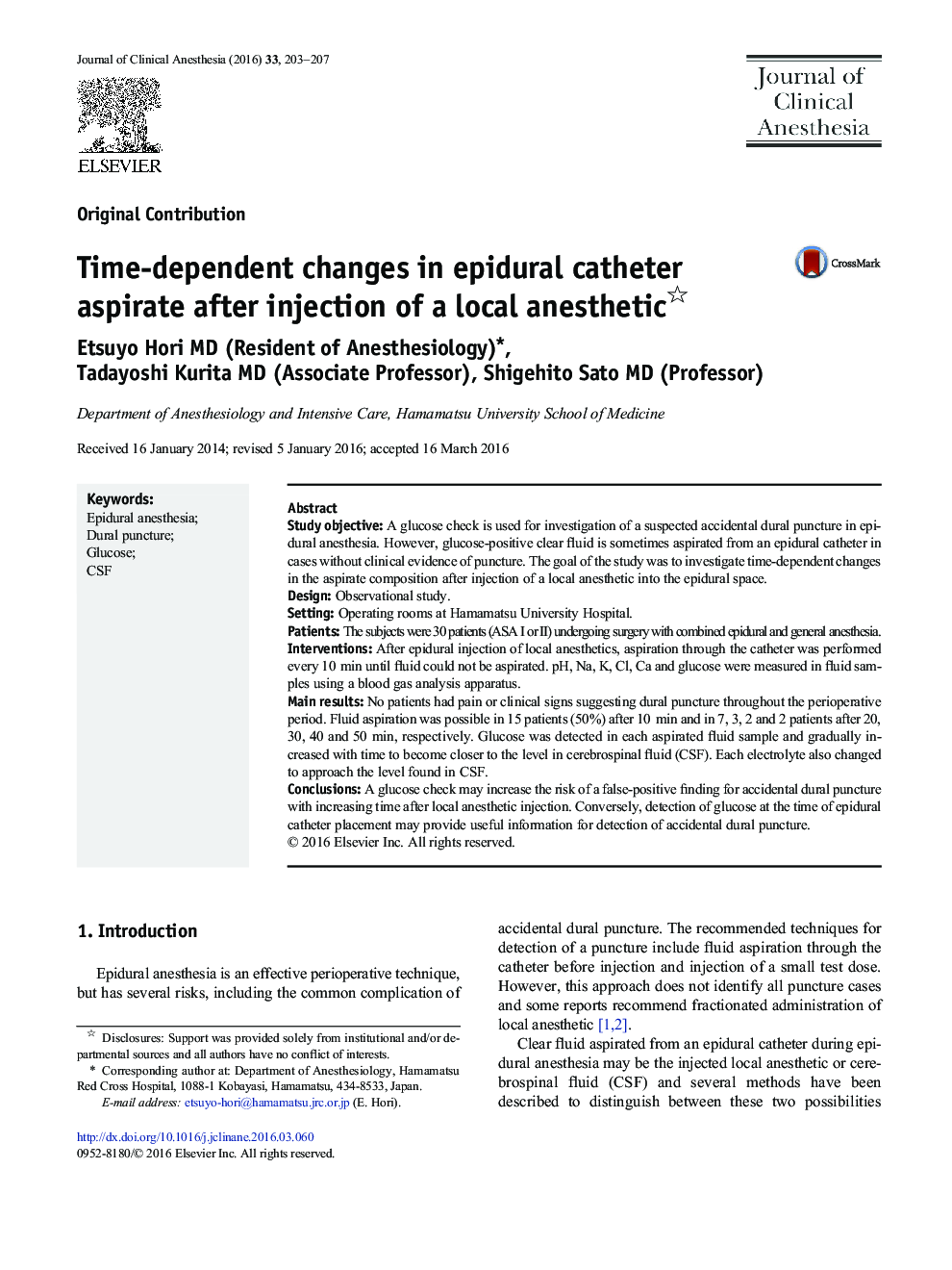| Article ID | Journal | Published Year | Pages | File Type |
|---|---|---|---|---|
| 2762106 | Journal of Clinical Anesthesia | 2016 | 5 Pages |
•A glucose check has a risk of a false-positive finding for accidental dural puncture.•Glucose was detected as early as 10 minutes after local anesthetic injection.•The aspirate composition changes over time from that of the local anesthetic to CSF.•Glucose detection immediately after anesthetic injection may indicate dural puncture.
Study objectiveA glucose check is used for investigation of a suspected accidental dural puncture in epidural anesthesia. However, glucose-positive clear fluid is sometimes aspirated from an epidural catheter in cases without clinical evidence of puncture. The goal of the study was to investigate time-dependent changes in the aspirate composition after injection of a local anesthetic into the epidural space.DesignObservational study.SettingOperating rooms at Hamamatsu University Hospital.PatientsThe subjects were 30 patients (ASA I or II) undergoing surgery with combined epidural and general anesthesia.InterventionsAfter epidural injection of local anesthetics, aspiration through the catheter was performed every 10 min until fluid could not be aspirated. pH, Na, K, Cl, Ca and glucose were measured in fluid samples using a blood gas analysis apparatus.Main resultsNo patients had pain or clinical signs suggesting dural puncture throughout the perioperative period. Fluid aspiration was possible in 15 patients (50%) after 10 min and in 7, 3, 2 and 2 patients after 20, 30, 40 and 50 min, respectively. Glucose was detected in each aspirated fluid sample and gradually increased with time to become closer to the level in cerebrospinal fluid (CSF). Each electrolyte also changed to approach the level found in CSF.ConclusionsA glucose check may increase the risk of a false-positive finding for accidental dural puncture with increasing time after local anesthetic injection. Conversely, detection of glucose at the time of epidural catheter placement may provide useful information for detection of accidental dural puncture.
